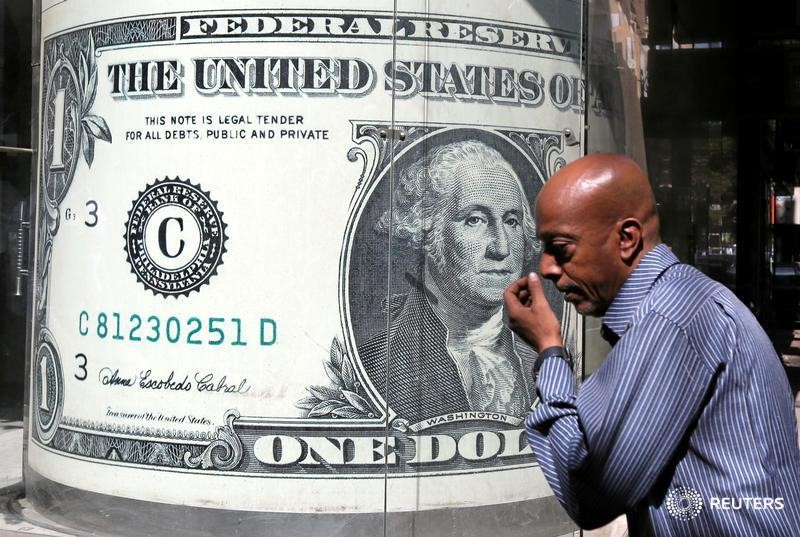By Peter Nurse
Investing.com - The dollar edged lower in early European trade Tuesday, drifting ahead of the release this week of key U.S. inflation data to guide the Federal Reserve’s interest rates outlook.
At 2:55 AM ET (0755 GMT), the Dollar Index, which tracks the greenback against a basket of six other currencies, traded 0.1% lower at 93.938, retreating further from Friday’s high of 94.645, it’s highest level for over a year.
EUR/USD gained 0.1% to 1.1597, USD/JPY fell 0.4% to 112.82, GBP/USD gained 0.1% to 1.3568, and the risk sensitive AUD/USD was largely flat at 0.7420.
The Federal Reserve’s insistence that it would be "patient" in deciding when to raise rates at its recent policy-setting meeting has caused the dollar to drift lower, even in the wake of Friday’s strong payrolls release.
That’s because Fed funds futures have pushed back the likely date for rates lift-off from around July next year to September or October.
However, this is before the release of the latest U.S. inflation data, starting with factory gate prices later Tuesday, which are expected to show inflation remaining very much a factor in the central bank’s thinking.
U.S. PPI is expected to rise 0.6% on the month in October, that’s up a massive 8.7% on the year, at 8:30 AM ET (1330 GMT).
“We still see it as likely that inflation will climb further into the year-end,” said analysts at Nordea, in a note. “Apartment List’s rent data for recent movers continued to soar in October and is now at 15.8% y/y, indicating plenty of upside risks to the CPI over the coming six months. Used car prices have started to rise again, and we could see a jump in hotel prices plus airline fares if Covid-19 delta cases continue to subside into Christmas.”
As well as this inflation data, a number of central bankers are due to speak later on Tuesday, including European Central Bank President Christine Lagarde and Fed Chairman Jerome Powell.
Elsewhere, USD/TRY rose 0.5% to 9.7250 after Turkey’s central bank cut the amount of gold banks are allowed to hold as part of their lira reserve requirements, effectively increasing the amount of local currency lenders need to deposit at the central bank.
The central bank also increased reserve requirement ratios for foreign currency deposits by 200 basis points to offset any impact on its reserves.
The lira is suffering as President Recep Tayyip Erdogan battles accepted monetary policy wisdom by seeking lower interest rates to fight soaring inflation.
